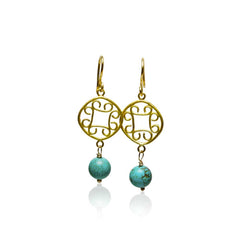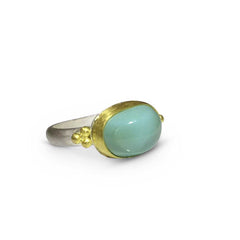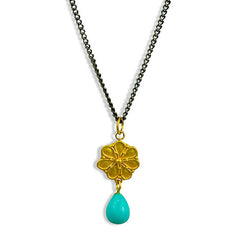by Nancy Troske March 27, 2017 1 Comment

Turquoise is one of the world’s most ancient gemstones. Archaeological excavations have revealed that Egyptian royalty wore turquoise jewelry as early as 5500 B.C. Chinese artisans were carving it more than 3,000 years ago. Native American tribes have worn turquoise as a ceremonial gem and adorned their jewelry and amulets with it for thousands of years. It is soft enough to be shaped, polished and fashioned into jewelry with simple tools – hence its use from the earliest times of man's civilization.

Although a bright blue shade comes to mind for most people, turquoise actually comes in a wide range of colors from a bright green, to greenish blue to bright royal blue shades. The Egyptians were mining turquoise as early as 6,000 BC on the Sinai peninsula. You'll see quite a lot of Turquoise in the ancient Egyptian jewelry of the Pharaohs. It was revered even to the point that the Egyptians were the first to develop a turquoise colored glass glaze - the first simulated turquoise. The ancient Chinese civilizations valued turquoise very highly and considered it second only to their jade.
The native Americans of the southwest USA have long mined and cut turquoise - they were making necklace strands and other turquoise jewelry by hand many centuries before the first European settlers arrived. It was highly prized and circulated among the Native Americans. Scientific testing has proven that some ancient beads found in South America originally came from the Cerrillos turquoise mine near Santa Fe, New Mexico. When Europeans brought the technology of working metals like silver with them to the new world, the American Indians learned to use turquoise with silver to develop their own special style of jewelry.
The word turquoise probably is derived from the French term meaning Turkish stone. It was first used by French and other European traders regarding a beautiful blue stone received from Turkish traders - it was actually Persian turquoise (from mines located in what is now known as Iran).
Turquoise is found in only a few places on earth: dry and barren regions where acidic, copper-rich groundwater seeps downward and reacts with minerals that contain phosphorus and aluminum. The result of this sedimentary process is a porous, semi-translucent to opaque compound of hydrated copper and aluminum phosphate. Turquoise is judged on three basic factors—its color, texture, and the presence or absence of matrix.
Color is turquoise’s main claim to fame. It can be greenish blue, bluish green, or yellowish green, depending on its iron content. Its most highly valued color is an intense, evenly distributed, medium blue known as Persian blue in the trade.
Like many gemstones, the demand for high quality turquoise exceeds the supply. This has led to the development of treatment methods to improve the color and durability of lower cost material. Softer and more porous turquoise can be enhanced by impregnating the stone under pressure with hot acrylic resins. The resins improve the color, hardness, and durability of the material. As long as the materials are represented as treated, this is regarded as an acceptable practice in the gemstone industry.

Please feel free to comment or share this content.
April 05, 2017
People around the world wore gold jewelry proudly, By definition, no substance or form of matter or pattern of information of any kind,
Jewelry World Info
Comments will be approved before showing up.
by Nancy Troske December 01, 2024
by Nancy Troske August 12, 2023

Nancy Troske
Author